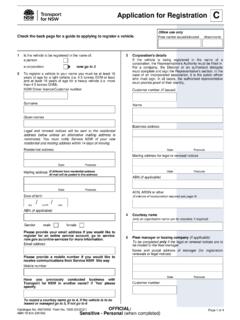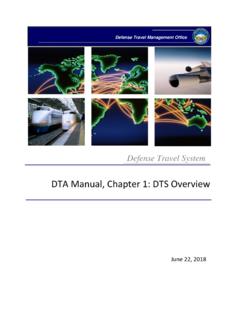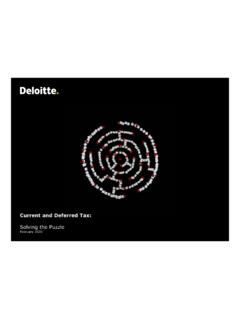Transcription of Stamp Duty Land Tax: mixed-property purchases and …
1 Stamp duty Land Tax: mixed-property purchases and Multiple Dwellings Relief Consultation Publication date: 30 November 2021. Closing date for comments: 22 February 2022. 1. Summary Subject of this consultation This consultation seeks views on ways to ensure there are fairer tax outcomes and to prevent abuse of the Stamp duty Land Tax (SDLT) legislation, specifically mixed-property ' transactions and Multiple Dwellings Relief' (MDR). Scope of this consultation HM Revenue and Customs (HMRC) is consulting on . changes to the way in which tax is calculated when purchasers acquire property that is mixed- property (meaning it comprises both residential and non-residential property). options to reform the SDLT treatment of property purchases that include more than one dwelling (Multiple Dwelling Relief rules), Who should read this Taxpayers; tax practitioners and conveyancers; those involved in the construction, marketing and sale of property; property rental businesses, including buy-to-let landlords; Non-Governmental Organisations with an interest in tax.
2 Duration 12 weeks from 30 November 2021 to 22 February 2022. How to respond or enquire about this consultation Any responses or queries about this consultation should be sent by email to: Or by post to: HM Revenue and Customs Room 3/63. 100 Parliament Street LONDON. SW1A 2BQ. HMRC also welcomes discussions with interested parties. If you would like to meet with policy officials, please contact HMRC using the details above. After the consultation A summary of responses to the consultation will be published, after which the government will then carry out a formal consultation on any proposed changes to legislation. 2. Contents Summary .. 2. 1. Introduction .. 4. 2. Background .. 5. 3. mixed-property purchases .. 7. 4. Multiple Dwellings Relief (MDR) .. 12. 5. Tackling incorrect claims to MDR .. 15.
3 6. Assessment of impacts .. 22. 7. Summary of consultation questions .. 25. 8. The consultation process .. 27. 9. Annex A: How apportionment could work .. 32. 3. 1. Introduction Stamp duty Land Tax (SDLT) is an important source of government revenue, raising over billion in 2020-21. It is also an important factor for people buying a place to live and for business when investing in property as an asset or a place from which to trade. As with all taxes, the government keeps SDLT policy under review, including to ensure that those who pay the tax have confidence that the SDLT system is not open to abuse. HMRC has identified two areas of SDLT where the current rules are leading to potentially unfair outcomes, incorrect claims, or abuse of the rules. These two areas are - the taxation of mixed-property ' transactions purchases which consist of both residential and non-residential property.
4 These transactions are sometimes called mixed-use', and relief for purchases of two or more dwellings known as Multiple Dwellings Relief'. The rules for mixed-property transactions are being used by some purchasers to unfairly reduce the SDLT payable, despite the purchase not containing any meaningful non-residential aspects. In light of this, and the increased attempts to abuse the provisions of the relief, the government is consulting on potential changes to the rules to ensure fairer outcomes for those buying residential property and to reduce the scope for incorrect claims and abuse of the rules. HMRC has also seen an increase in incorrect or abusive claims for Multiple Dwellings Relief (MDR). While HMRC has a strong record of successfully challenging incorrect MDR claims at Tribunal, to improve administrative efficiency and customer experience this consultation sets out a number of options to reduce or eliminate the scope for incorrect claims and abuse of the rules.
5 This consultation is taking place during stage 1 of the process. The purpose of the consultation is to seek views on the policy design and any suitable possible alternatives, before consulting later on a specific proposal for reform. 4. 2. Background General scheme of SDLT. Stamp duty Land Tax (SDLT) is charged on the purchase of land and buildings situated in England and Northern Ireland. Responsibility for property transaction taxes equivalent to SDLT. in Scotland and Wales are devolved to their national administrations with effect from 1 April 2015. and 1 April 2018 respectively. SDLT therefore does not apply in Scotland and Wales. SDLT is a marginal rate tax, with each rate applied to the portion of the purchase price that falls within each rate band. For purchases of residential property, the amount of tax payable depends on whether the purchase is subject to any reliefs and if any SDLT surcharges apply.
6 For leasehold properties, SDLT is chargeable on both the premium paid and the net present value of the rents when the lease is newly granted. Aspects of the SDLT regime which may interact with either or both mixed-property transactions and Multiple Dwellings Relief (MDR) include the following. Linked transactions Special rules apply to treat certain transactions as linked' to ensure that purchasers cannot reduce the rate of tax by artificially splitting what is, in substance, a single transaction. Linked transactions are transactions which form part of a single scheme, arrangement or series of transactions between the same vendor and purchaser or, in either case, persons connected with them. The effect of these rules is to aggregate the linked transactions for the purposes of determining the amount of tax which applies to the transactions as a whole.
7 purchases of six or more dwellings purchases of six or more dwellings in a single transaction are taxed as purchases of non- residential property. This is known as the six or more rule'. The Higher Rates for Additional Dwellings (HRAD). Higher rates of SDLT apply to purchases of additional residential properties by individuals (such as second homes or buy to lets) and to purchases of residential properties by companies. The rate is 3% above the standard residential rates of SDLT. HRAD only applies to the purchase of a freehold or a leasehold premium; it does not apply to rental payments. Where an individual purchases a new main residence before selling their old main residence, they must pay HRAD on the purchase of that new main residence. However, provided that they sell the old main residence within three years of the purchase of the new house, they can claim a refund of HRAD.
8 Where an individual purchases a property that has a separate dwelling within the same building or grounds, such as a self-contained annex, it does not count as an additional dwelling for the purposes of HRAD if its value is less than a third of the property as a whole. Non-UK resident SDLT surcharge (NRSDLT). 5. A 2% surcharge applies to purchases of residential property if the purchaser is non-UK resident. A special test is used to determine if a purchaser is non-UK resident for SDLT. The 15% anti-enveloping' rate of SDLT. A 15% flat rate of SDLT is charged on certain non-natural persons (typically companies). purchasing dwellings for more than 500,000. A dwelling which is intended to be used for a specified business purpose (for example, a property rental business or property development trade) is relieved from the 15% rate charge.
9 Where that is the case the HRAD rate applies instead. The relief is withdrawn if, within a period of three years from the date of purchase, that intention is not carried through. In that case a further return must be submitted and the additional tax paid. 6. 3. mixed-property purchases Introduction mixed-property purchases are ones which involve both residential and non-residential property. They vary greatly in the relative amounts of residential and non-residential property present and the uses to which the non-residential property element is put. mixed-property purchases range from a country house with some land let for grazing, to fast food shops with flats above, pubs and B&Bs, through to large scale city centre developments comprising ground floor retail outlets with floors of flats above.
10 At the time SDLT was introduced, the tax charges on residential and non-residential property were closely aligned and so taxing mixed-property at the non-residential rates did not create a significant tax advantage. Over time, as the rates and bands have evolved, incentives have been created to present what is in reality residential property as non-residential to take advantage of lower tax rates. These incentives are even stronger where the 3% HRAD surcharge would apply if the purchase were treated as residential. How mixed-property works purchases of mixed-property are currently wholly charged to the non-residential rates of SDLT, which are lower than the residential rates. This treatment applies even where only a small proportion of the property is non-residential in nature. There is no lower limit on the amount of non-residential property in a purchase to take advantage of this treatment.














